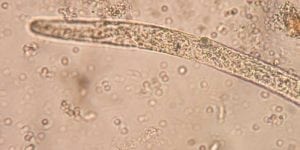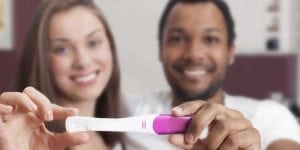With the advancements in fertility technology in recent years, there are more at-home options to help couples conceive and keep track of their fertility.
Wearable Technology and the Advantages
Fertility tracking in the wearable tech industry continues to steadily grow from year to year. One of the chief reasons for the rise in popularity is that many women are opting to wait until later in life to get pregnant and start growing their family. Many women are focusing on their careers and financial stability, which has resulted in more attempts to conceive when they are beyond their peak fertile years.
Although getting pregnant when fertility issues are involved and even after the age of 35 can be a challenge for many couples, some of the fertility trackers on the market can help. There are a variety of gadgets available, such as wearable basal body thermometers that can help women track their ovulation during their monthly cycle. The data the wearable device receives syncs through an app on a smartphone and gives the user insight into when she is most likely to conceive. In turn, this helps women increase their chances of becoming pregnant by properly tracking their cycle and identifying their fertile window.
Fertility Trackers Can Help Couples Conceive
According to a clinical assistant professor of obstetrics and gynecology at Stanford University School of Medicine, Dr. Jennifer Conti, the chance of getting pregnant each month is only around 20 percent for healthy couples. Fertility trackers, however, can take away a lot of the confusion surrounding the topic of cycle length and trying to get pregnant by helping pinpoint the best days to conceive. There are numerous apps for fertility tracking already available, but the addition of wearable technology, whose goal is to track your reproductive health, gives couples an even greater edge.
Fertility-Tracking Devices

There are several fertility-tracking devices you can use if you are looking to conceive. Among some of the most effective at-home and on-the-go technology that can help couples looking to conceive are the following:
- Ava Bracelet: The Ava bracelet is worn only at night, tracking your menstrual cycle and collecting data such as your breathing patterns, temperature, resting pulse rate and more. Information can be synced with an app on your smartphone or tablet and show you, through algorithms, your most fertile days.
- EarlySense Percept: This fertility-tracking device is a disk that monitors your breathing and heart rate while you sleep. It is placed under your pillow and uses the information to determine your next period, the date you should ovulate and the days you’re most fertile.
- Mira Fertility: This device is a stick that detects your luteinizing hormone, which triggers ovulation. It works with an app that uses the data to determine when you will ovulate and provides you with the percentage of conception possibility on a particular day.
- Temp Drop: This device can be worn with an armband or be attached directly to the skin to monitor sleep quality, skin temperature and ambient temperature to track the fertility cycle.
- iFertracker: This fertility-tracking device is a wearable thermometer that tracks a woman’s cycle by gathering temperature data during her sleep to pinpoint the fertile window and time of ovulation.
- Himama: This device is worn inside a bra-like top and tracks basal body temperature, heart rate and sleeping patterns to determine the fertility fluctuations and ovulation window during a woman’s cycle.
- OvuSense: This sensor is used overnight and vaginally inserted. This device measures the body’s core temperature every five minutes and predicts ovulation 24 hours in advance.
- Trak Fertility, for Men: There are also fertility trackers for men that measure sperm count and health. This is an at-home test that can tell men how to boost their sperm countby analyzing their sperm samples from the privacy of their own home.
- YO Sperm Test: Similar to Trak Fertility, this is an at-home test kit for sperm health. What sets this apart however is that it includes detailed information through their app to help further analyze sperm health and fertility levels. To do the test, men have to collect a sample in a collection cup, add a vile of liquefying powder and let it sit for 10 minutes, after which, they use the included pipettes to place a tiny drop on a test slide, pop it into the YO clip and attach it to their phone. This app then takes a video of the sperm and reveals if the man is fertile. The advantage: The video can be stored and later presented to the doctor.
While fertility technology won’t absolutely guarantee that a couple will conceive, it can help improve your chances of getting pregnant by providing helpful data about a woman’s cycle and the couples fertility. At the very least, it can give you better insight into your body.





